Voltage and current are two most important parameters of electricity. This project teaches you to build a simple volt-amp meter using avr microcontroller. This project may not enable you to build a high end measurement tool but will be a good diy project which gives a better understanding on A/D converter in microcontrollers. This meter is capable of measuring voltage ranging from 0 to 30V and current ranging from 0 to 5A. Care must be taken while using so that the input should not exceed the specifications.
SETTING UP THE SENSORS:
VOLTAGE MEASUREMENT:
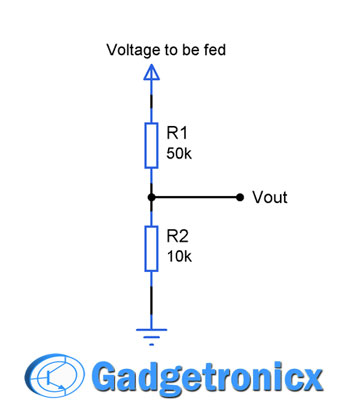
A simple potential divider is employed to measure the voltage. The above potential divider was set up in such a way it gives 5v as output when 30v input is applied to it since the input voltage given to AVR should be less than or equal to 5V.
The formula for setting the potential divider resistor is
Vout = Vin x R2 / (R1 + R2)
We knew our Vout should be <= 5V. So applying this and fixing a resistor R2 as 10k will give
5v = 30 x 10k /(R1 + 10k)
R1 = 50k.
CURRENT MEASUREMENT:
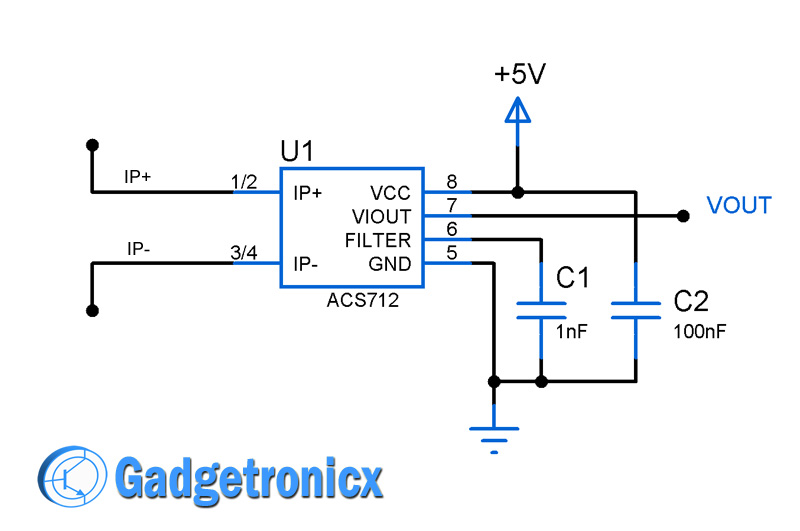 We are using a pretty straight forward approach to measure current. Here we are using a Hall effect current sensor to measure current. This sensor can measure current up to 5A. 1A of current is equivalent to 185mv of change in output voltage. There are also 20A and 30A version of this chip available. Read more about this sensor here.
We are using a pretty straight forward approach to measure current. Here we are using a Hall effect current sensor to measure current. This sensor can measure current up to 5A. 1A of current is equivalent to 185mv of change in output voltage. There are also 20A and 30A version of this chip available. Read more about this sensor here.
CALIBRATION:
The next task is to perform the calibration to display the real values using our Microcontroller. So in order to do that we need to know the Step Size of our A/D converter in AVR microcontroller. It was given by the formula
Step size = Vref / 2^10 (Since it is a 10 bit ADC) .
= 5/1024 = 4.88mv
This is the step size of our A/D converter in AVR microcontroller that is for every 4.88mv change in input there will be a change in ADC value in the register.
TO CALCULATE VOLTAGE:
As i have previously mentioned the voltage sensing is done by using a Voltage divider which bears the formula
Vout = Vin x R2 / (R1 + R2)
Am going to use this formula to derive the real voltage from the sensed voltage. Since we obtain the sensed voltage in the form of digital numbers we need to make a conversion to obtain Vout value from it. So
Vout = Digital Value read from A/D register * Vref / 2^10
Vout = Digital Value read from A/D register * 5 / 1024 , Simplifying this we get
Vout = Digital Value * 0.00488
This will give us exact Vout voltage from the voltage divider, now applying this Vout in the divider equation will give the real voltage given as input to the voltage divider.
Vin= Vout * (R1+R2) /R2
Vin = Vout * 60k / 10K
Vin = Vout * 6
The above final equation i have added in the 41 line of the code, This will give the real voltage that needs to be measured and displayed.
TO CALCULATE CURRENT:
The IC ACS712 5A chip gives out 185mA of voltage change in the output when there is a 1A change in the current flow. And the nominal voltage will be of 2.5 Volts so the ADC always reads 2.5 V even if there is no current through it.
Vout = Digital value read from the A/D register * 5 /1024 , simplifying we get
Vout = Digital value * 0.00488
So the real value of current can be given as
Amp = (Vout – Nominal Voltage) / 185mA (Change in output voltage of sensor)
Amp = (Vout – 2.5) / 0.185
This equation was added in the line 54 of the code. I have replaced Amp with available float variable Vin in the code to cut down the code size.
CODE:
#include<avr/io.h>
#define F_CPU 8000000UL
#include<util/delay.h>
#include<stdio.h>
double vin;
double vout;
unsigned int value;
char output[6];
void lcd_cmd(char cmd) //Command sub routine LCD
{
PORTC=cmd;
PORTD&=~(1<<0);
PORTD|=(1<<1);
_delay_ms(5);
PORTD&=~(1<<1);
_delay_ms(5);
}
void lcd_data(char *txt) //Data sub routine LCD
{
while(*txt!='\0')
{
PORTC=*txt;
PORTD|=(1<<0);
PORTD|=(1<<1);
_delay_ms(5);
PORTD&=~(1<<1);
_delay_ms(5);
txt++;
}
}
void voltage(void) //Sub routine to read voltage
{
ADMUX|=(1<<0);
ADCSRA|=(1<<6);
while(ADIF==0);
value=ADCL|ADCH<<8;
vout=value*0.00488; //To determine output Voltage from sensor
vin=6*vout; //To determine real voltage
sprintf(output,"%.2f",vin);
lcd_cmd(0x86);
lcd_data(output);
}
void current(void)
{
ADMUX&=~(1<<0);
ADCSRA|=(1<<6);
while(ADIF==0);
value=ADCL|ADCH<<8;
vout=value*0.00488; //To determine output voltage from sensor
vin=(vout-2.5)/0.185; //To determine real current
sprintf(output,"%.2f",vin); //Float to char conversion for printing
lcd_cmd(0xc6);
lcd_data(output);
}
int main(void)
{
DDRC=0xff;
DDRD=0x03;
PORTC=0x00;
PORTD=0x00;
lcd_cmd(0x38);
lcd_cmd(0x01);
lcd_cmd(0x0c);
lcd_cmd(0x80);
lcd_data("VOLTS:");
lcd_cmd(0xc0);
lcd_data("CURNT:");
ADMUX=0x00;
ADCSRA=0x87; //Initializing A/D converter
while(1)
{
voltage(); //Voltage display
_delay_ms(10);
current(); //Current Display
}
return 0;
}
NOTE:
- Care must be taken so that the input parameters (voltage & current) should not exceed the limitations.
- You can change the limitations by replacing the sensors and must be calibrated accordingly.

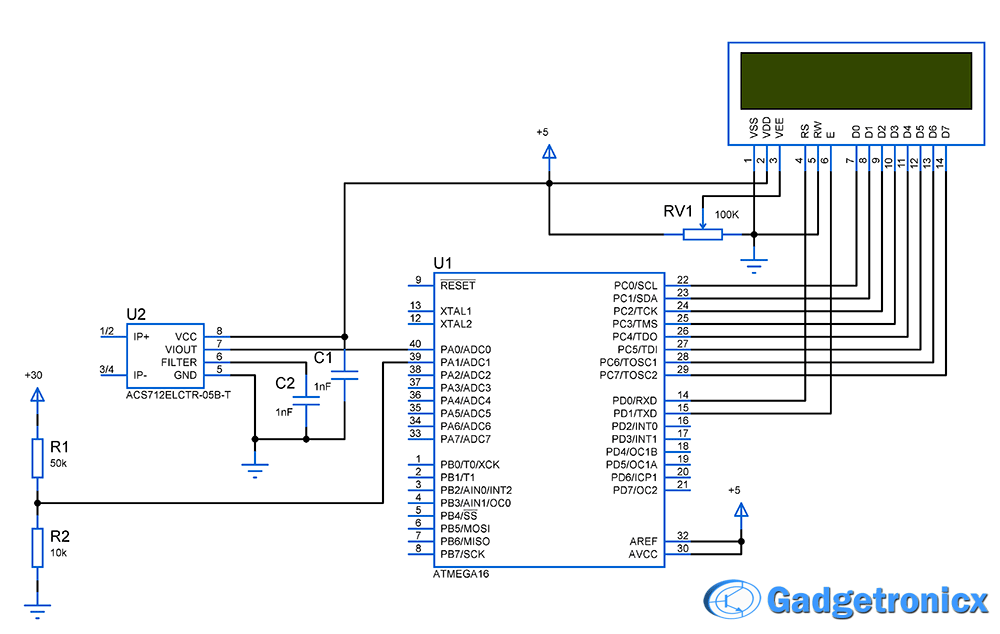
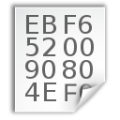
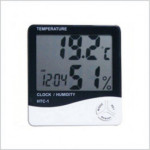
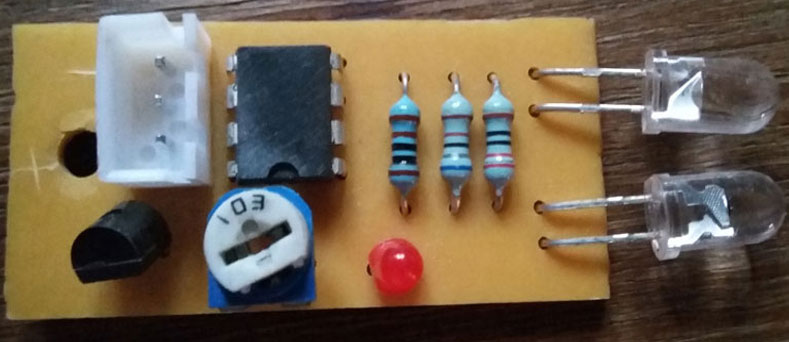
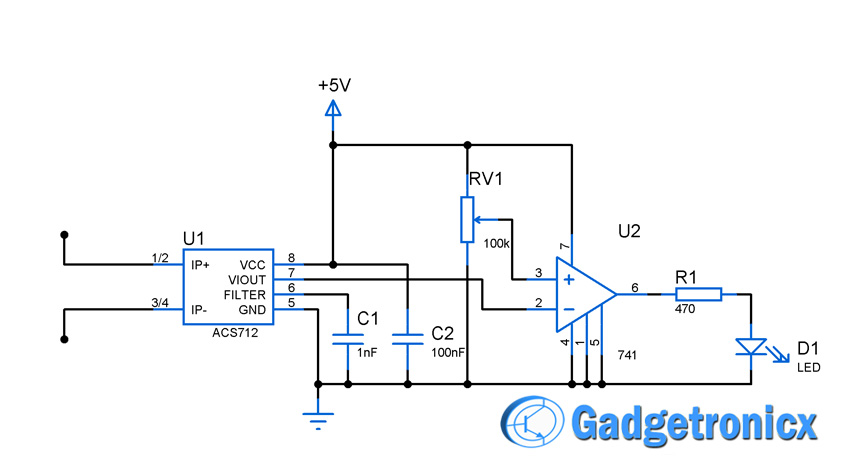
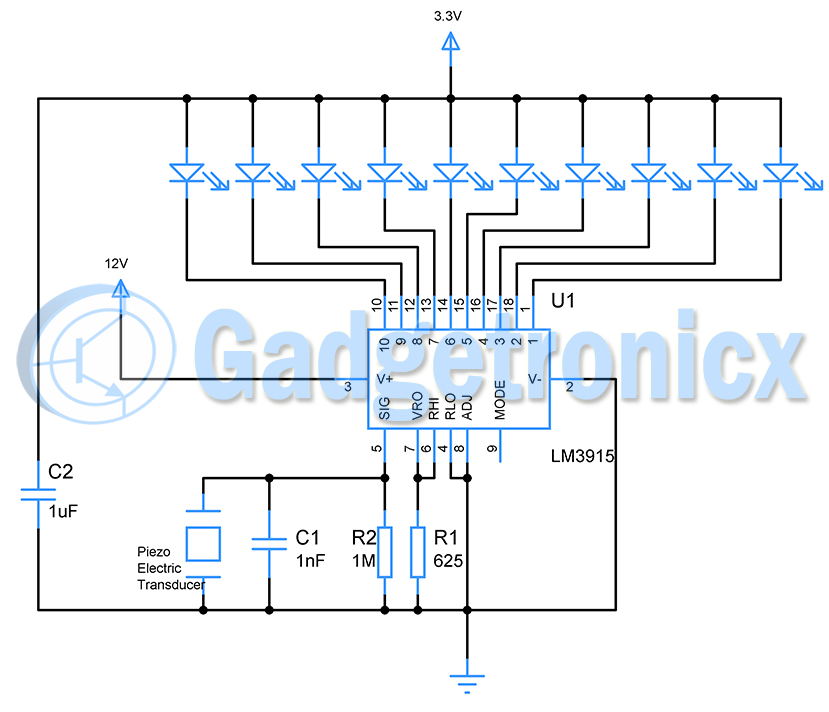
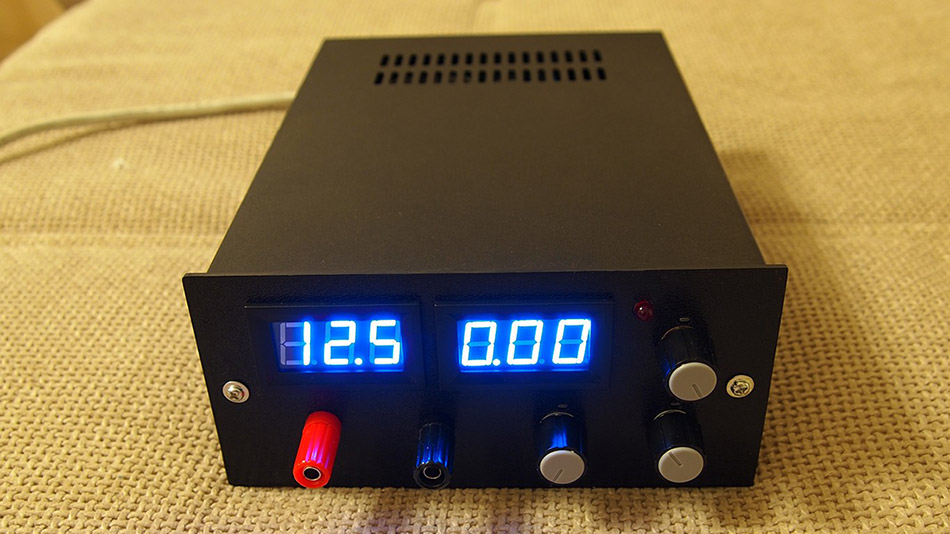
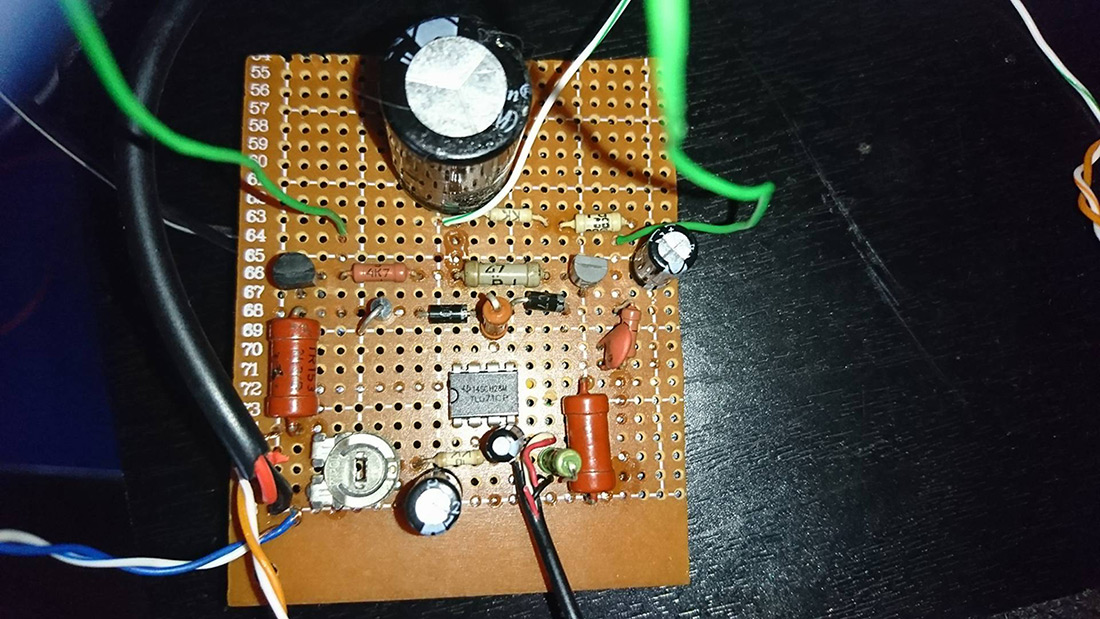
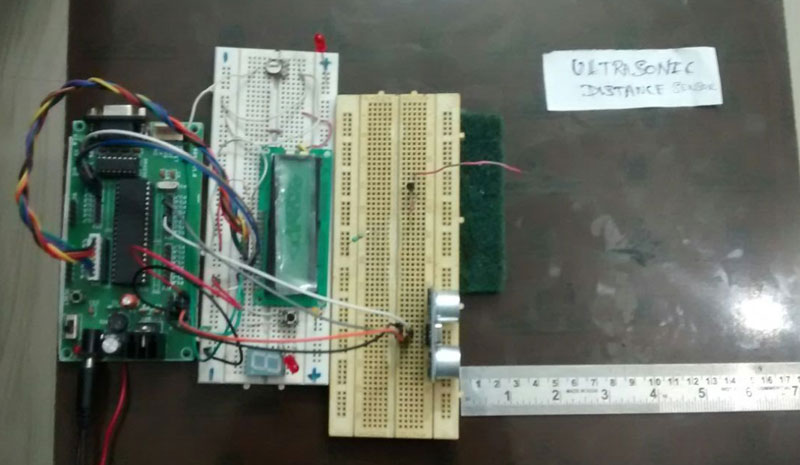
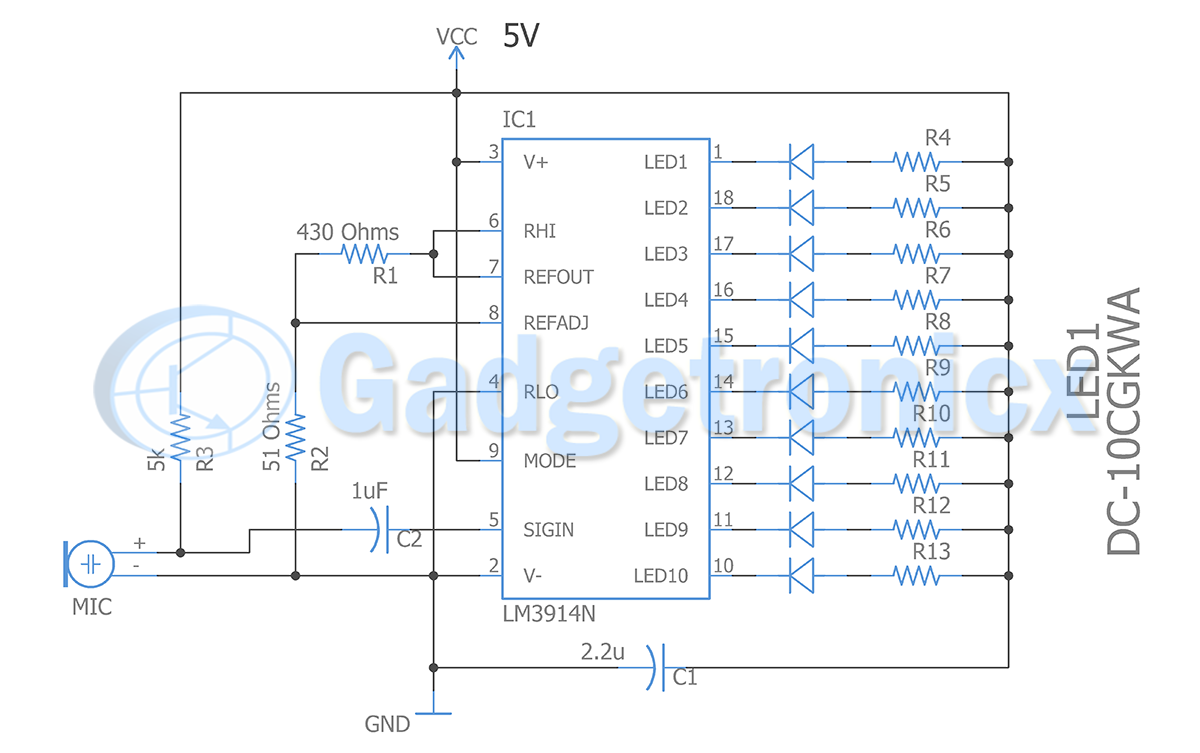
hello sir can u please give me a same code but i need a output at any pin at specific current value and specific voltage vale for relay,led & buzzer driving purpose
Irfan,
Calculate the ADC value for your desired voltage and current value and modify the code accordingly. Calculation is clearly explained in the article. All the best
Hello Sir.Can I burn this code in My Atmega16 by using codevision AVR?
Yes, I guess
Hello,
it is very useful article. i want to use it in my smps but i need it to measure 0~60V/0~40A(in this format: 26.45V 12.50A) and also using 4-digit multiplex seven segments. may you help me?
hello
thanks for the job
what is Nominal voltage here and why it if 2.5?
thanks
How to join the VDD of LCD into the 100k register?
HOw to use this code? i mean where should i put it?
Hi Manwar,
The LCD pin connections in the diagram was wrong, updated now correctly have a look. Thanks for pointing it out
Hi frank nice tutorial bro….can you tell me what is the exact problem because output is like voltage ? and current ?…Thanks in advance
Hi Ali,
Have you tested your sensors please?
can you update the code not the hex fie only
I didn’t understand what should I include in the 4th line
Hi Shesh,
It’s the standard header for input output function in C. it is mandatory
Can you check your C Code for us because it have some problem it show Volt : ?
Current : ?
can you fix it ? thank you
Top,
Fixed now, added #include in the 4th line. That should do the trick.
Now your code can run but when it work it can’t calculate data it show Volts: ?
Current : ?
can you fix your code pls
Mos,
It’s Fixed now, added #include in the 4th line.
in line 4 include what ? in your code